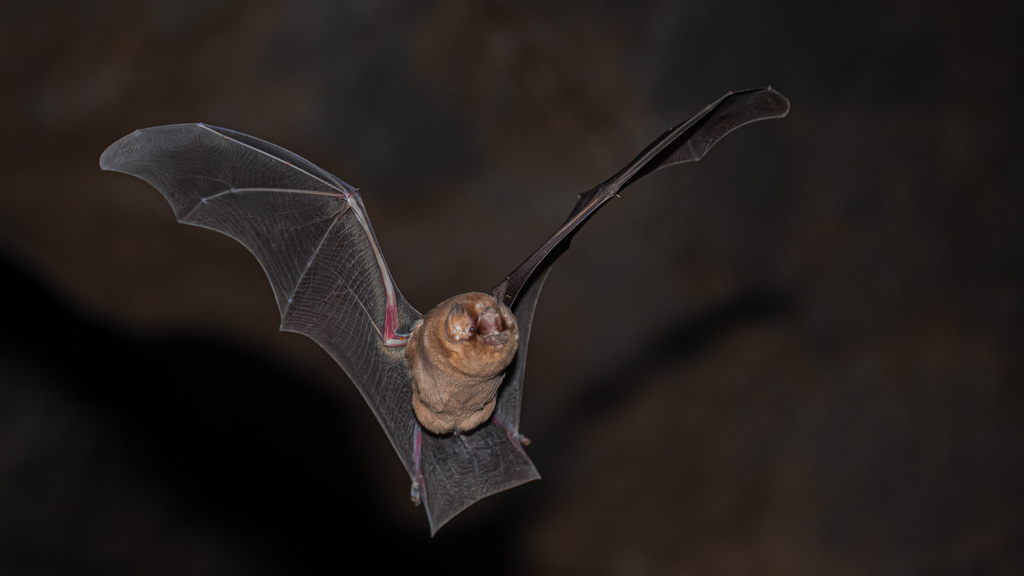When I woke up this morning, I thought I’d been moved in my sleep from eastern Idaho to the Oregon coast. That’s how foggy it was at sunrise. I live in the West’s dry and high desert. Fog is a myth in these arid parts, but here it was swirling through my neighborhood like a misty graveyard scene.
The trick of an overnight rainstorm dumping heavy moisture amid mild, fall temperatures created tricks. Fog being the obvious one, but I found other surprises around my house too. Mushrooms sprouted in my backyard and a salamander showed up in my window well.
With me on the inside of the pane and it on the outside, I watched closely as the dark, slick-skinned, lizard-like amphibian crawled through a litter pile of crispy, red and yellow leaves the wind had shoved against the basement glass.
I’m not sure what kind of salamander it was since we don’t see many salamanders on our block, but I do know for certain it was not a hellbender. Hellbenders are the largest salamander in North America and they don’t live in the West.
They live in the eastern United States. They’re one of many creatures that humans slapped with scary names, despite the fact that they’re harmless.
Top 10 List
-
An eastern hellbender (Cryptobranchus alleganiensis ssp. alleganiensis).© Anthony Brais / iNaturalist Hellbenders are found in cold water, clean streams with riffles preferably, but they don’t have gills like fish do. They breathe through their skin as rushing current sends oxygenated water over their bodies. At two feet long and weighing up to five pounds, these nocturnal, aquatic predators of crab can live more than two decades in the wild and can outlive a human if they’re taken in as a pet.
The name “hellbender” has nothing to do with their behavior, which is mild, and everything to do with their appearance, which is odd. Colonial settlers considered the bottom-dwelling salamanders so strange looking that they must have come from Hell and must be hell bent on returning.
You can read more about how scientists are trying to protect hellbenders here.
-
A satanic leaf-tailed gecko (Uroplatus phantasticus).© globalherping / iNaturalist If that hellbender really wants back into the sinner’s underground inferno, it will have to go through the presumed boss of the place. The satanic leaf-tailed gecko looks more like foliage than the devil, but the name stuck anyway based on its red eyes and horns.
This four-inch reptile takes mimicking to camouflage extremes with spikes on its head and notches plus lines on its body that make it look like a decaying leaf. It will even shed its leaf-shaped tail, like a deciduous tree losing its annual cover, to confuse predators. It’s a devilishly deceiving tactic for sure, but harmless to humans. The Madagascar-native gecko only eats crickets and moths.
-
The head of a goblin shark (Mitsukurina owstoni). © Dianne Bray at Museum Victoria / Wikimedia Commons A shark on our horribly-named yet harmless list may surprise you, but it’s a valid contender. There are no human attacks on record by the rarely seen goblin shark. That record is backed up by their deep-sea lifestyle. Goblin sharks are living fossils that don’t come across many people at depths of more than 4,000 feet.
Their protruding snouts inspired their name. There’s a mythical goblin in Japanese folklore with a similar nose.
Compare this to the innocuous sounding cookie-cutter shark, a species that should inspire nightmares. This small shark chisels off cookie-sized chunks of flesh on much larger prey, like whales, leaving behind a small crater.
-
Another deep dweller that doesn’t hurt or haunt is the vampire squid. The 12-inch cephalopod inhabiting dark, tropical waters doesn’t eject ink when threatened. It releases bioluminescent mucus instead.
It doesn’t suck blood either. It slurps marine snow, tiny particles of organic matter floating in the water column.
Its nefarious name is inspired by its purple cloaked appearance that looks like a vampire’s cape, but more accurately resembles an octopus rather than a squid. This makes sense since its lineage traces way back to the eight-legged sea creature.
-
A ghost-faced bat (Mormoops megalophylla). © Marco Zozaya / iNaturali This presumed spook comes from caves and tunnels in the Texas lowlands. Like sharks, bats raise alarm among us, but these shouldn’t because like the goblin shark, the ghost-faced bat is harmless, too. They’re not interested in us. The strong, fast flyers eat insects in the air while on the move.
Ghost-faced bats roost together like other bats, up to 500,000 at a time, but they spread out. Apparently they like more personal space in the roost than other types of bats do. They look different than other bats too, thus the name. Flaps of skin fold around their face in ghost-like fashion paired with their large round ears and small eyes for true-boo effect.
-
An aye-aye in Madagascar. © Matt Franceyk / Flickr In Madagascar, aye-aye means harbinger of death. This sounds bad and looks worse, but again…the aye-aye is harmless. The harbinger of death is the world’s largest nocturnal primate. It’s a lemur. By day it sleeps in nests. At night it wanders and feasts.
Specialized ears help the aye-aye hear hollow spots in trees where grubs hide. A jointed middle finger is for digging and bulging Gollum-like eyes see well in the dark. All these adaptations make them scary-looking, stealth foragers in the forest. Locals consider the aye-aye bad luck, or even worse…the bringer of death itself. Unfortunately, this has led to unjustifiable killing of the aye-aye, but ecotourism may make this mammal more valuable alive than dead.













Leave a Comment